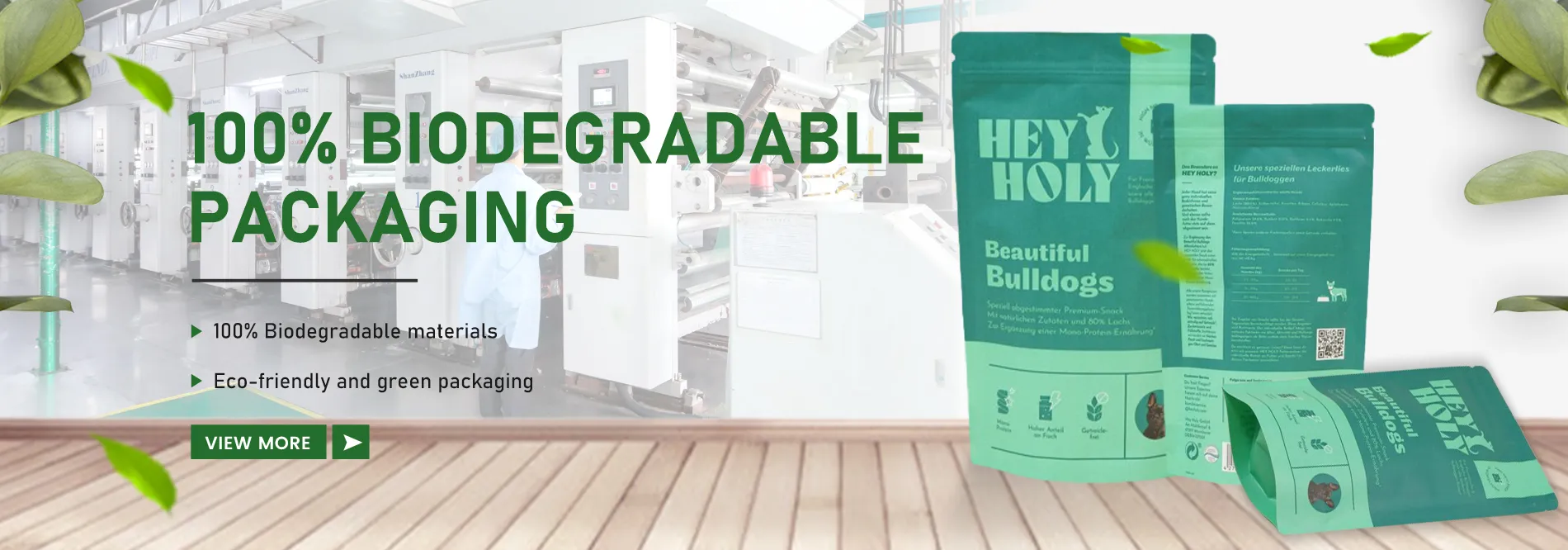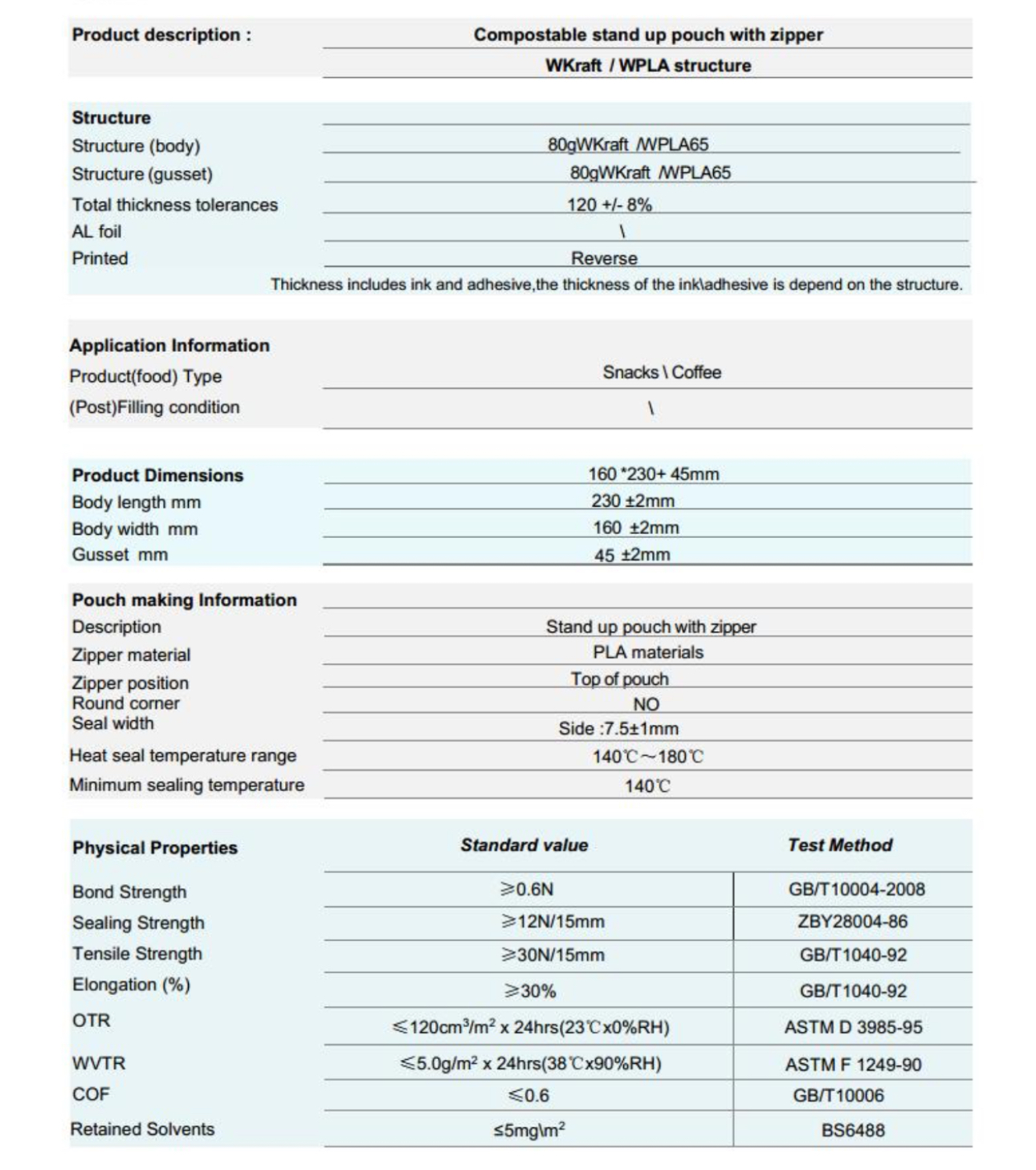In today’s eco-conscious market, businesses are constantly searching for sustainable packaging solutions that don’t compromise on quality or functionality. Enter compostable and biodegradable stand-up pouches, a game-changer for brands like FavoriteTec, committed to environmental responsibility without sacrificing the needs of their discerning clientele.
Compostable and biodegradable stand-up pouches, made from materials like PLA (Polylactic Acid) and certified compostable films, offer a revolutionary approach to packaging. They decompose under compostable conditions, reducing waste and carbon footprint, making them an ideal choice for businesses aiming for sustainability.
As we delve deeper into the benefits and specifications of these innovative pouches, it becomes clear why they’re becoming the preferred choice for eco-friendly businesses worldwide.
What Makes Stand-up Pouches Compostable?
Compostable stand-up pouches are crafted from materials that can break down and decompose in a compost environment within a specific timeframe. Materials like PLA (Polylactic Acid), derived from renewable resources such as corn starch or sugarcane, play a crucial role in the composition of these pouches. These materials not only ensure the pouches’ biodegradability but also maintain the integrity and functionality required for various packaging needs.
Material Composition: These pouches are predominantly fabricated using renewable Plantcell™ technology, incorporating plant-based components throughout, including in zippers and valves. Common materials include PLA (Polylactic Acid), a bioplastic sourced from renewable resources like corn starch, along with other compostable films. Some variants also integrate kraft paper, offering a natural aesthetic.
Why Should Businesses Choose Biodegradable Packaging Solutions?
Opting for biodegradable packaging solutions like compostable stand-up pouches allows businesses to significantly reduce their environmental impact. These packaging options decompose naturally, avoiding the accumulation of waste in landfills and oceans. Moreover, adopting such eco-friendly practices enhances a brand’s image and appeal to environmentally conscious consumers, offering a competitive edge in the market.
Consumer Perception: Electing compostable packaging bolsters a brand’s image, particularly among eco-conscious consumers. The younger demographics, in particular, prioritize sustainability and are inclined to patronize brands that exhibit environmental stewardship.
How Does Certified Compostable Material Benefit the Environment?
Using certified compostable materials for packaging ensures that the products meet stringent standards for biodegradability and compostability. This certification guarantees that the materials will decompose in a composting setting, turning into nutrient-rich soil without leaving toxic residues. Such practices contribute to the circular economy, promoting the reuse of resources and minimizing environmental pollution.
Compostability and Biodegradability: Engineered for full biodegradation and compostability, these pouches transform into healthy compost, eschewing microplastics. They adhere to industrial composting standards such as ASTM D6400 and EN13432, guaranteeing decomposition within a predetermined timeframe without releasing noxious toxins.
Environmental Impact: Utilizing compostable stand-up pouches significantly diminishes carbon footprint and fossil fuel dependence. Grounded Packaging suggests their pouches can eliminate up to 850 kg of fossil fuel and curtail the carbon footprint by 288 kgCO² per 1000kg of product.
What Are the Advantages of Using PLA in Stand-up Pouches?
PLA offers several advantages for stand-up pouches, including its clear or opaque appearance, durability, and resistance to grease and oil. Its composition from renewable resources reduces the reliance on fossil fuels, making it a more sustainable option. Additionally, PLA’s biodegradability ensures that it can be composted, further reducing its environmental impact.
Applications: These pouches are remarkably versatile, accommodating a broad spectrum of products including dry foods, health supplements, pet treats, and non-food items. They are prized for their strength, freezer compatibility, and outstanding barrier qualities against oxygen and moisture, thus preserving product integrity.
Can Compostable Pouches Be Customized for My Brand?
Absolutely! Companies like FavoriteTec specialize in providing customized packaging solutions that align with your brand identity. Whether it’s through unique patterns, logos, or specific sizes, compostable stand-up pouches can be tailored to meet your branding needs while showcasing your commitment to sustainability.
Considerations and Limitations
Strength and Durability: While these pouches can be tailored for enhanced strength, they typically offer inferior moisture and oxygen barriers compared to traditional plastics. This could restrict their application for products necessitating long-term protection from these elements.
Price Point: Compostable materials generally come with a higher price tag than conventional plastics, which may elevate packaging expenses. Nonetheless, the investment in sustainable packaging can be counterbalanced by the positive effects on brand reputation and customer loyalty.
Composting Infrastructure: The success of compostable packaging hinges on the presence of industrial composting facilities. Although home composting is feasible for certain products, the limited commercial composting infrastructure could constrain the environmental advantages.
In conclusion, compostable and biodegradable stand-up pouches represent the future of packaging for environmentally conscious businesses. By choosing these sustainable options, brands like FavoriteTec not only support the planet but also align with the values of customers who prioritize eco-friendliness, such as Lynette and her company. Embracing these innovative solutions is a step forward in reducing the environmental footprint and promoting a healthier planet for future generations.
